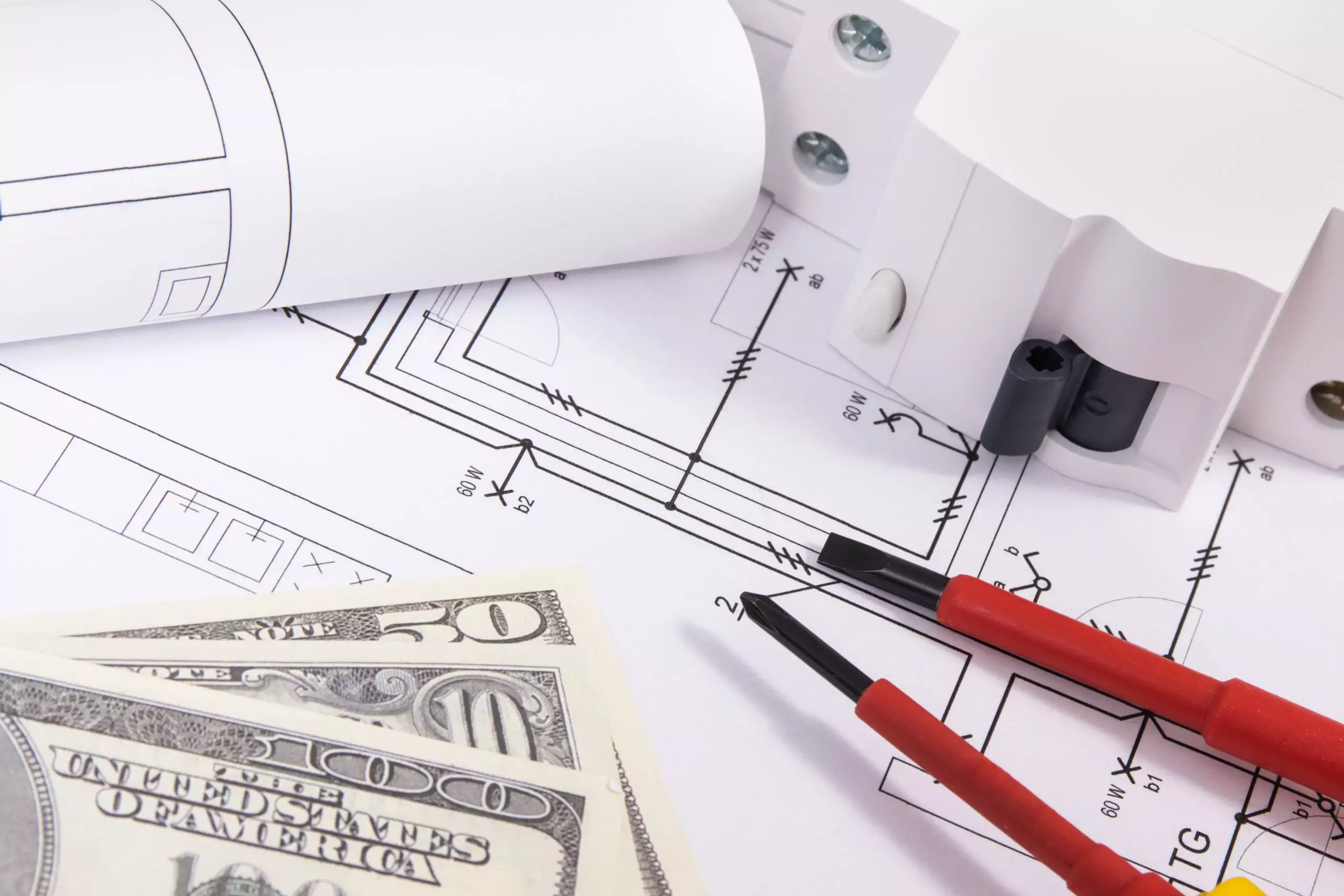Thinking about installing a new electrical system or upgrading an existing one? You’re probably wondering about the cost. Well, it’s not a straightforward answer.
The price tag can swing dramatically based on factors like the project’s size, the complexity of the electrical system, and even where you live. For a shiny new build, electrical work might eat up 5% to 9% of your total budget. That’s not chump change, especially for larger projects.
And if you’re diving into the world of renovations, brace yourself. Costs can skyrocket depending on how much of an overhaul your system needs. From smart homes to energy-efficient lighting, the bells and whistles you choose can also bump up the price.
But don’t forget the quality of your materials and the expertise of your electrician are crucial. They might add to your upfront costs, but they’re worth it for the safety and efficiency of your home. So, ready to dive deeper into the world of electrical system installation costs?
Let’s get into it and explore how to balance your budget with your needs for a safe, efficient home.
What is the Cost of Electrical System Installation?
The cost of electrical system installation can vary widely depending on several factors, including the size of the project (e.g., a residential home versus a commercial building), the complexity of the electrical system, regional labour rates, and the quality of materials used. Generally, for a new construction, the electrical installation can account for a significant portion of the overall building costs, often ranging from 5% to 9% of the total project cost. For residential projects, this could mean anywhere from a few thousand dollars for smaller homes to tens of thousands for larger, more complex installations.
In renovations or upgrades to existing structures, costs can vary even more dramatically based on the state of the current electrical system and the extent of the updates required. Upgrading an outdated panel, adding circuits, or rewiring an entire home can significantly impact the overall cost. Additionally, the installation of specialized systems such as smart home technology, security systems, or energy-efficient lighting can also affect the final price.
Labour costs play a crucial role in the total expense of electrical system installation. These costs can be influenced by the electrician’s experience, the demand for skilled labour in the region, and the complexity and duration of the project. While somewhat more predictable, material costs can also fluctuate based on the quality of components chosen and the current market prices for copper and other essential materials.
Given these variables, homeowners and project managers must obtain detailed quotes from licensed electricians or electrical contractors. These professionals can provide accurate estimates that consider the specific requirements and challenges of the project at hand. This approach ensures that all aspects of the electrical system installation are accounted for, from safety and compliance with local codes to functionality and future scalability.
Understanding the cost of electrical system installation requires a comprehensive look at the project’s scope, the materials involved, and the labour required. By considering these factors, individuals and businesses can make informed decisions that balance cost, quality, and functionality to achieve a safe and efficient electrical system.
How do the Types of Electrical Systems Affect Costs?
The types of electrical systems significantly influence installation costs, varying across residential, commercial, and industrial sectors. Each category’s unique requirements, from the number of circuits to the quality of materials and specialized equipment needs, play a crucial role in determining the overall installation costs.
Residential Systems
- Single-family homes typically involve straightforward electrical systems. The cost can increase with high-end features or smart home technology.
- Multi-family units see higher costs due to the complexity and scale, requiring additional circuits, meters, and safety features.
Commercial Systems
- Retail spaces need customized electrical solutions to support lighting, security, and digital infrastructure, leading to varied installation costs.
- Office buildings require advanced electrical systems for IT infrastructure, energy-efficient lighting, and climate control, which influence the installation expense.
Industrial Systems
- Manufacturing plants necessitate specialized equipment and safety features, requiring intricate electrical installations that drive up costs.
- Warehouses must support large-scale operations and comply with safety regulations, affecting the complexity and cost of electrical systems.
What Factors Influence Installation Costs?
Several key factors impact the costs of electrical system installations. These factors contribute to the financial investment required for electrical system installation.
Size of the Property
- The overall dimensions of a property, including both square footage and the number of rooms or units, fundamentally dictate the scope and cost of an electrical installation project.
Complexity of the Electrical System
- A system’s complexity, determined by the number of circuits required and any specialised equipment needs, significantly impacts installation costs.
Quality of Materials
- Choosing between standard and high-end materials influences not only the initial cost but also the long-term durability and brand reputation of the electrical components used.
Labour Rates
- The cost of labour, which can vary greatly between local and national averages, is affected by the experience and expertise of the electricians performing the installation.
How Can One Reduce Installation Costs?
Reducing installation costs is achievable by choosing cost-effective materials, comparing brands and prices, and weighing long-term savings against upfront costs. These strategies not only reduce initial costs but also enhance the project’s overall efficiency and success.
Choosing Cost-Effective Materials
- Opt for materials that offer the best value for money without compromising on quality, significantly reducing the overall cost.
Comparing Brands and Prices
- Conduct thorough research and comparison of different brands and their prices to ensure you get the best deal available on the market.
Considering Long-Term Savings vs. Upfront Costs
- Investing in higher-quality materials or equipment may have a higher initial cost but can lead to substantial savings in the long run through reduced maintenance and energy consumption.
Hiring Experienced Contractors
- Select contractors with a proven track record to ensure the job is done efficiently and correctly, potentially reducing the need for costly corrections later.
Checking References and Past Projects
- Verifying a contractor’s references and reviewing their past projects can provide assurance of their capability and reliability, minimizing risks of subpar work.
Negotiating Rates and Timelines
- Engage in negotiations on rates and timelines with contractors to achieve better pricing and ensure that the project stays on budget and schedule.
Planning the Installation During Construction
- Incorporate the electrical installation plan early in the construction phase for better integration and to prevent expensive alterations later.
Integrating Electrical Plans Early
- Early integration of electrical plans into the construction project allows for more accurate budgeting and can reduce the likelihood of costly surprises.
Coordinating with Other Construction Phases
- Effective coordination with other phases of construction ensures that the electrical installation process is smooth and efficient, potentially saving time and money.
What are the Long-term Benefits of Quality Installation?
Quality installation of electrical systems offers significant long-term benefits, including energy efficiency, which leads to lower utility bills and a reduced carbon footprint. It ensures safety, minimising the risk of electrical fires and ensuring compliance with safety codes. Additionally, quality installation results in durability, with less frequent repairs and a longer lifespan of electrical components, ultimately providing peace of mind and financial savings over time.
Energy Efficiency
- Achieving energy efficiency through quality installation leads to significant savings and environmental benefits.
Lower Utility Bills
- Quality installations can result in lower utility bills, offering financial savings over time.
Reduced Carbon Footprint
- By optimising energy use, quality electrical installations contribute to a reduced carbon footprint.
Safety
- A paramount benefit of quality installation is safety, which includes minimizing the risk of electrical fires.
Minimising the Risk of Electrical Fires
- Proper installation and materials significantly minimise the risk of electrical fires, safeguarding property and lives.
Ensuring Compliance with Safety Codes
- Quality installations ensure that electrical systems are up to date with safety codes, providing an additional layer of security.
Durability
- High-quality installations enhance durability, leading to fewer issues and a longer lifespan for electrical components.
Less Frequent Repairs
- With quality workmanship, electrical systems require less frequent repairs, reducing inconvenience and cost.
Longer Lifespan of Electrical Components
- Quality installations ensure a longer lifespan for electrical components, maximizing the value of the initial investment.
Making Smart Investments in Power
Electrical system installation costs hinge on many variables, project size, system complexity, materials, and labour all shape your budget. Understanding the nuances of each factor empowers you to cut unnecessary costs without compromising quality or safety. And when done right, a well-installed system offers lasting benefits like energy efficiency, durability, and peace of mind.
At Vista Projects, we combine decades of experience with a commitment to truth-based engineering to deliver electrical systems that are reliable, cost-effective, and built to last. Whether it’s new construction or an upgrade, our integrated team ensures your investment pays off in performance and longevity.
Connect with Vista Projects today and let’s design a smarter electrical solution for your next project.









